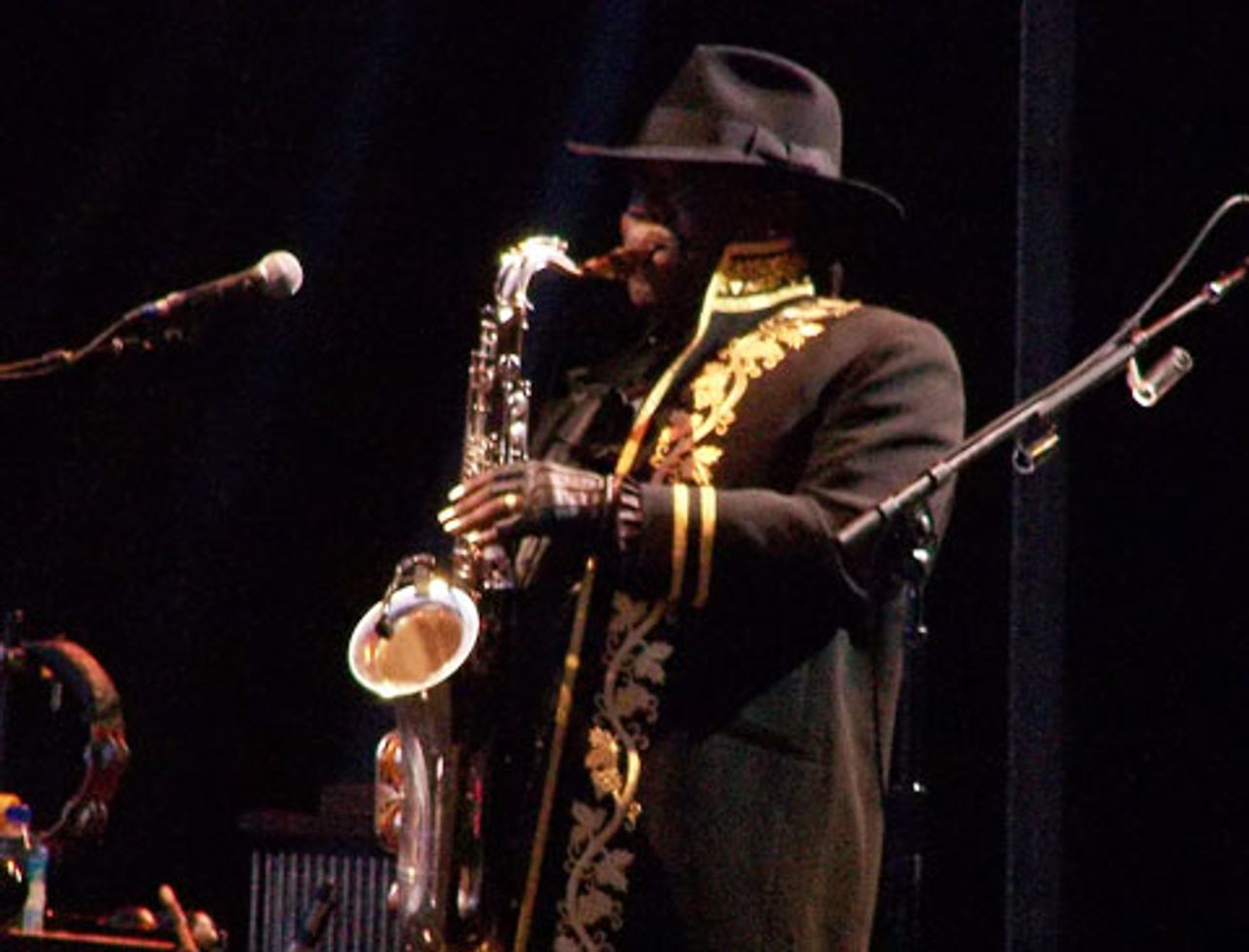 Clemons in 2009
Clemons in 2009The passing of Clarence Clemons, the longtime saxophonist for Bruce Springsteen and the E Street Band, on June 18 deserves a comment. More than a few commentators have noted that Clemons was in many ways the “spirit” of Springsteen’s famous band and his death has produced an outpouring of tributes from admirers. His music has touched a great many people.
I don’t feel Clemons was a great musician, but his playing was an integral part of the E Street Band’s sound, and he contributed some memorable parts to the rich arrangements the band used in the mid-1970s, perhaps best represented on the Born To Run album. The brief solo Clemons plays roughly two minutes into that album’s title song is especially memorable.
As a player, Clemons’ tone left something to be desired and he never strayed far from the most comfortable and familiar territory. It almost goes without saying that as a saxophonist he wasn’t a John Coltrane or a Sonny Rollins, but then that wasn’t the tradition he came from. The comparison may be a bit unfair. Clemons was far more indebted to the screaming tenor saxophonists of 1950s rock music.
Clemon’s work as a solo artist, including his 1985 album Hero, has not held up very well. The music, to say nothing of the 1980s production techniques, is badly dated.
Clemons’ death and the considerable attention it has received in the media have no doubt led listeners and fans to revisit Bruce Springsteen’s classic music of the 1970s and 80s, the period in which Clemons made his biggest contribution to Springsteen’s sound. There is material of considerable interest to be found in his body of work.
Springsteen is a talented songwriter and an outstanding live performer. As we are often reminded, Springsteen is the “working class singer.” He takes up some significant themes in his music. In his work of the 1970s and 1980s, one finds Springsteen singing that the “Glory Days” of post-war America were over and that working people were facing enormous hardships. One recalls, above all, the numerous dead towns in Springsteen’s songs that young people had to run from in order to make a life for themselves, the disillusionment, the anger over the experience of Vietnam which was still a relatively recent and fresh memory.
Having said that, Springsteen’s lyrics and many of the musical arrangements that go along with them are often far too sentimental. Life, even in its more difficult and challenging moments, tends to take on an unreal and romanticized character in his music. There always seems to be a barefoot girl sitting on the hood of some vintage car in his songs. It can be vivid and evocative imagery. But is it enough? His work tends to be more populist than penetrating.
While he has contributed a number of interesting songs and albums over the decades, Springsteen is perhaps least interesting in those times when he has taken leave of the E Street Band in order to reinvent himself as an extremely earnest and weary-sounding folksinger. Here he puts on seriousness as though it were a new suit of clothes and the weight of the world is communicated in a somewhat contrived and superficial manner. A long face and a hushed tone of voice are all that is required.
At his best, however, Bruce Springsteen reminds us that pop music can be entertaining and popular for a mass audience while still being music of meaning and substance.
